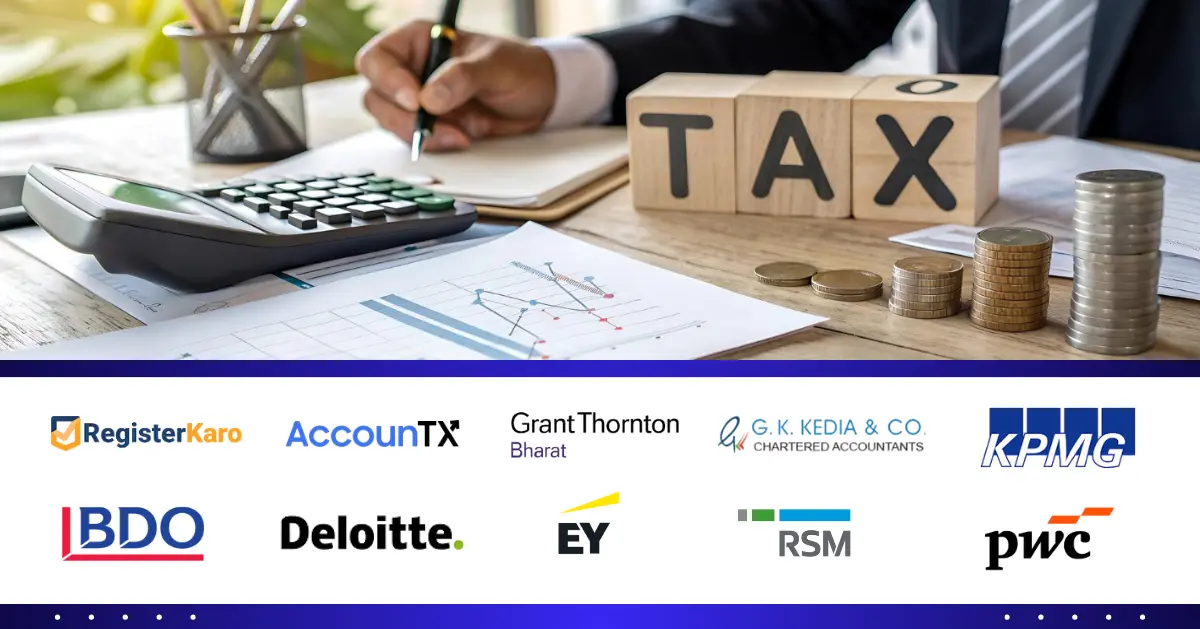
Introduction
The Goods and Services Tax (GST) on fertilizer in India is a unified taxation system that plays a significant role in the agricultural and fertilizer industry. Before GST, the taxation system was complex, involving multiple central and state taxes, leading to inefficiencies and price variations across different states. The introduction of GST has streamlined taxation, reducing cascading tax effects and promoting ease of doing business.
For businesses involved in fertilizer manufacturing, distribution, and sales, GST compliance is crucial to avoid legal complications and ensure smooth operations. Understanding GST return forms and following the correct GST tax filing procedures is essential for businesses to claim tax benefits and avoid penalties. Under indirect tax in India, businesses must file periodic GST returns depending on their turnover and registration type.
Fertilizer businesses need to be well-versed in different GST return types, including GSTR-1, GSTR-3B, GSTR-9, and GSTR-9C, to maintain GST compliance and meet tax obligations effectively. This guide provides an in-depth look at the GST structure on fertilizers, its impact on the industry, and compliance measures to ensure smooth operations.
Also Read: Apply for GST Registration with Registerkaro
What is the Rate of GST on Fertilizer?
Fertilizers are essential agricultural inputs that contribute significantly to crop yield and productivity. The GST on fertilizer varies depending on its type. The government has categorized different fertilizers under specific tax slabs to standardize taxation and eliminate inconsistencies in pricing.
GST Rates on Different Types of Fertilizers
- Chemical Fertilizers – The most commonly used fertilizers, including nitrogen, phosphorus, and potassium-based fertilizers, fall under the 5% GST rate. These fertilizers are classified under HSN codes 3102, 3103, 3104, and 3105.
- Bio-fertilizers and Organic Fertilizers – Environment-friendly alternatives to chemical fertilizers also attract a 5% GST rate to encourage sustainable farming.
- Phosphate and Potash Fertilizers – These fertilizers, which are crucial for soil health and crop growth, are taxed at 12% GST.
- Urea-based Fertilizers – Urea, a widely used nitrogen-based fertilizer, comes under the 5% GST slab to keep costs lower for farmers.
Pre-GST vs. Post-GST Taxation on Fertilizers
Before the introduction of GST on fertilizer, the sector was subject to various taxes such as excise duty, VAT, and other local levies, which varied from state to state. This led to inconsistencies in fertilizer prices across the country. With GST implementation, these multiple taxes were replaced by a unified tax structure, ensuring a more transparent and streamlined system.
The GST tax filing process has now simplified tax compliance for businesses, reducing the administrative burden and promoting uniform pricing. This has significantly benefited both manufacturers and farmers by eliminating tax inefficiencies and fostering a competitive market.
Impact of GST on the Agriculture and Fertilizer Industry
The introduction of GST on fertilizer has brought about substantial changes in the agriculture and fertilizer sector. While GST has simplified tax regulations and improved efficiency, certain challenges still exist. Let’s explore the key impacts:
1. Simplified Tax Structure
Before GST, fertilizers were subject to multiple indirect taxes, including excise duty, VAT, and entry tax. These levies increased costs for businesses and created tax inefficiencies. With GST, a single tax system now governs fertilizer sales, eliminating cascading taxes and making GST compliance more straightforward.
2. Increased Costs for Farmers
While some fertilizers benefited from reduced tax rates under GST, others witnessed an increase in taxation. Some fertilizers that were previously taxed at lower rates now fall under the 5% or 12% GST slab, leading to higher input costs for farmers. This increase in fertilizer prices can impact overall agricultural production costs.
3. Ease of Input Tax Credit (ITC)
One of the significant advantages of GST on fertilizer is the availability of Input Tax Credit (ITC). Businesses can claim ITC on GST paid for raw materials, transportation, and other related expenses. This helps in reducing overall costs and improves profitability for fertilizer manufacturers and distributors.
4. Uniformity in Pricing Across States
Before GST, fertilizer prices varied across states due to different local taxes. GST implementation has ensured standardized pricing, reducing price discrepancies and preventing illegal interstate trade. This has helped create a more organized and transparent market.
5. Reduction in Logistics Cost
The elimination of state-level taxes and check posts under GST has improved the transportation of fertilizers across India. Businesses now benefit from reduced logistics costs and faster movement of goods, ensuring a more efficient supply chain.
How to Claim Input Tax Credit on Fertilizers?
Claiming Input Tax Credit (ITC) is an essential aspect of GST compliance for businesses dealing with fertilizers. ITC allows businesses to offset the GST they pay on raw materials and other inputs against their final tax liability. To claim ITC efficiently, businesses must follow these steps:
1. Ensure Timely GST Filing in India
Filing GST return forms on time is crucial for availing ITC benefits. Businesses must adhere to GST tax filing deadlines to avoid penalties and ensure seamless operations.
2. Maintain Proper Documentation
To claim ITC, businesses must keep detailed records of invoices, tax receipts, and purchase orders. Proper documentation ensures accurate reconciliation and prevents discrepancies during audits.
3. Match Input and Output Tax Data
Reconciling input tax with output tax is necessary to ensure smooth ITC claims. Businesses must verify that purchase invoices match with sales records to avoid mismatches in GST filings.
4. File the Relevant GST Returns
To claim ITC, businesses must file the following GST return forms:
- GSTR-1 – Monthly or quarterly return for outward supplies.
- GSTR-3B – Summary return for tax liability on input and output taxes.
- GSTR-9 – Annual return consolidating all GST transactions.
- GSTR-9C – Audit report required for businesses with a turnover exceeding Rs. 5 crores.
5. Follow ITC Restrictions
Businesses must ensure that their purchases are from GST-registered suppliers to claim ITC. As per Section 16 of the CGST Act, only purchases from registered dealers qualify for ITC benefits.
Read blog: GST Returns Filing
Common Compliance Challenges for Fertilizer Sellers
Despite the benefits of GST on fertilizer, businesses often face several compliance challenges:
1. Complex GST Return Filing Process
Filing GST return forms requires businesses to manage extensive data entry and regular reconciliation. Failure to file timely returns can lead to penalties and loss of ITC benefits.
2. Delayed ITC Refunds
Many businesses experience delays in receiving ITC refunds, which can affect cash flow. Ensuring accurate GST filing in India and proper documentation can help mitigate refund delays.
3. Tax Rate Confusion
Different GST rates on fertilizers and raw materials often lead to miscalculations and errors in tax filings. Businesses must stay updated on tax rate changes to ensure accurate compliance.
4. Frequent Regulatory Changes
Indirect tax in India is subject to periodic revisions. Businesses must stay informed about GST rule changes to avoid compliance issues.
5. E-way Bill Requirements
For fertilizer shipments exceeding Rs. 50,000 in value, an E-way bill is mandatory. This adds to compliance requirements but ensures transparency in movement.
6. Reverse Charge Mechanism (RCM) Applicability
Purchases from unregistered dealers attract Reverse Charge Mechanism (RCM), where businesses must pay GST on behalf of the supplier. Understanding RCM applicability is crucial for GST compliance.
By following these compliance measures, businesses can efficiently manage their GST tax filing, maintain GST compliance, and optimize their operations within the indirect tax in India framework.
Conclusion
Understanding GST on fertilizer and ensuring proper GST tax filing is crucial for fertilizer businesses in India. The implementation of indirect tax in India through GST has significantly streamlined the taxation system, eliminating cascading effects and bringing transparency. However, businesses must remain vigilant about GST compliance to avoid legal complications, penalties, or missed opportunities for tax optimization. Proper maintenance of records, timely submission of GST return forms, and accurately claiming Input Tax Credit (ITC) are essential for reducing tax liabilities and enhancing profitability in this highly regulated industry. Given the dynamic nature of GST filing in India, staying updated with policy changes and procedural requirements is imperative. By ensuring timely and accurate GST tax filing, businesses can efficiently manage their tax obligations while maintaining financial stability.
Don’t let compliance challenges slow down your growth! Simplify your GST on fertilizer tax obligations with expert assistance from RegisterKaro. Our team ensures smooth GST filing in India, helping you focus on scaling your business without tax-related worries. Get started today—reach out to us at [email protected] and experience hassle-free tax compliance!
Frequently Asked Questions
The GST rate on fertilizers is 5% for most fertilizers and 12% for some specific categories like phosphate and potash fertilizers.




